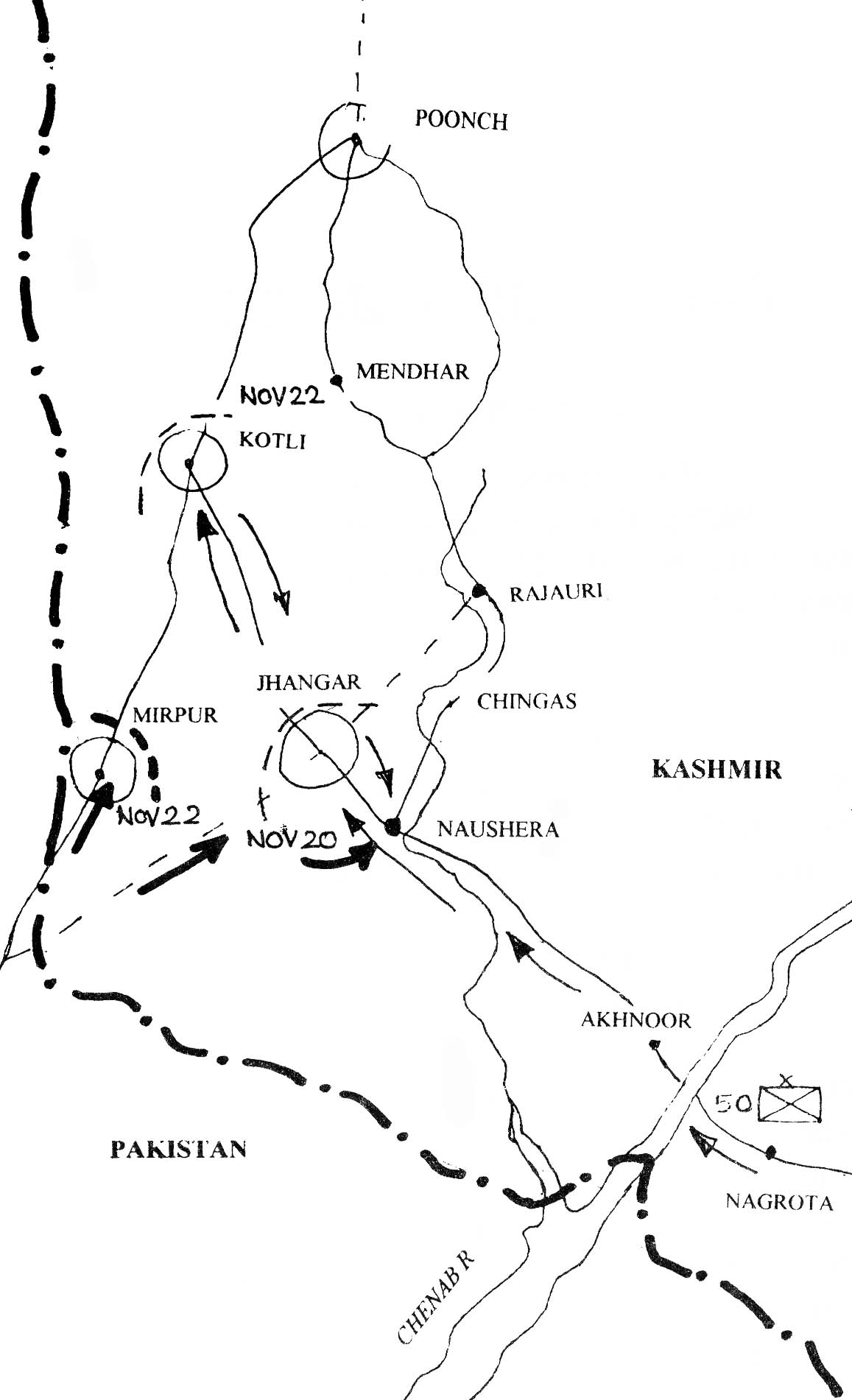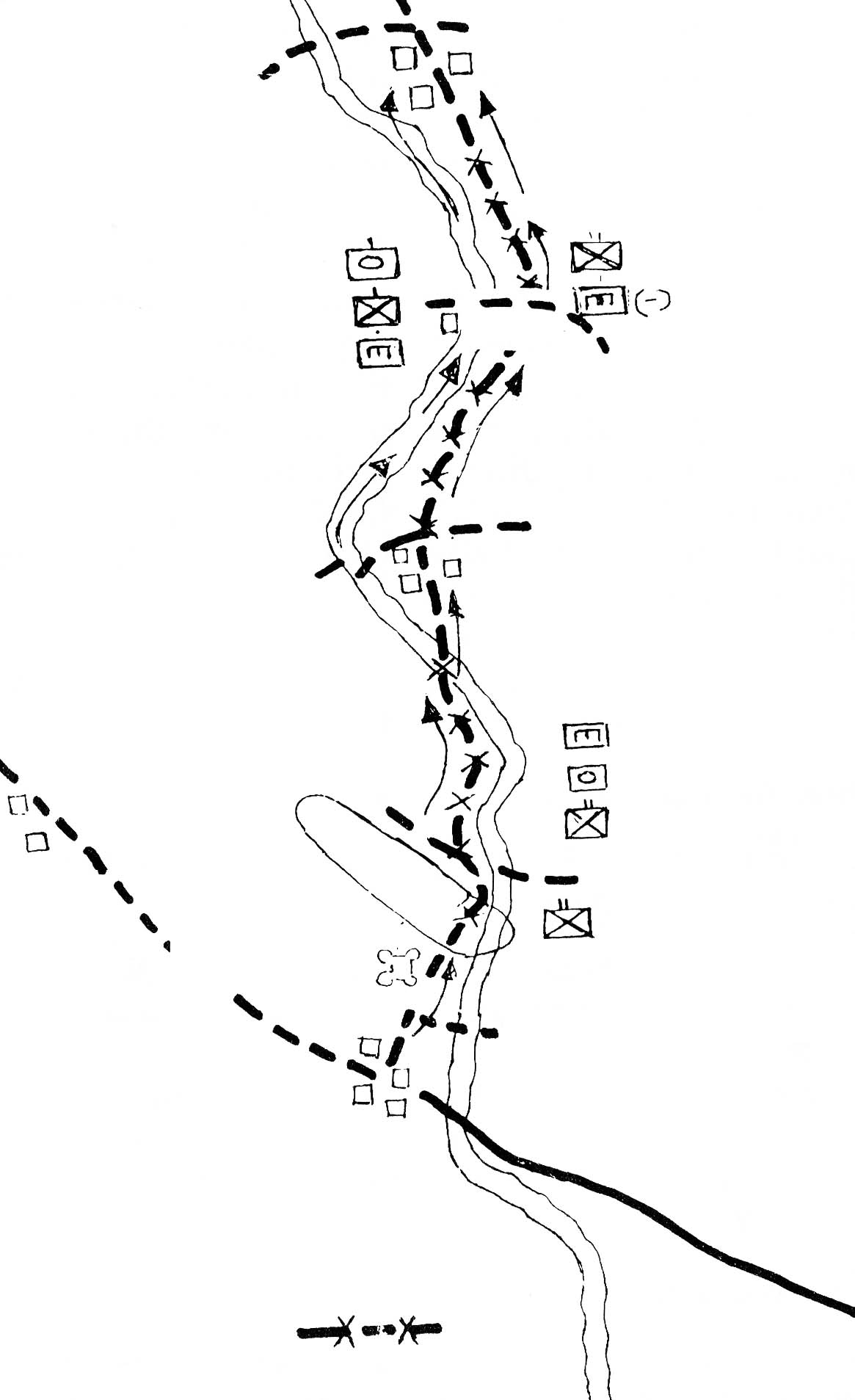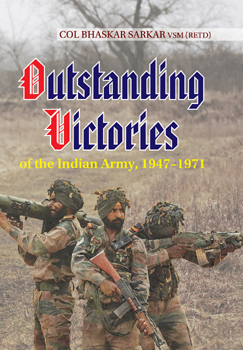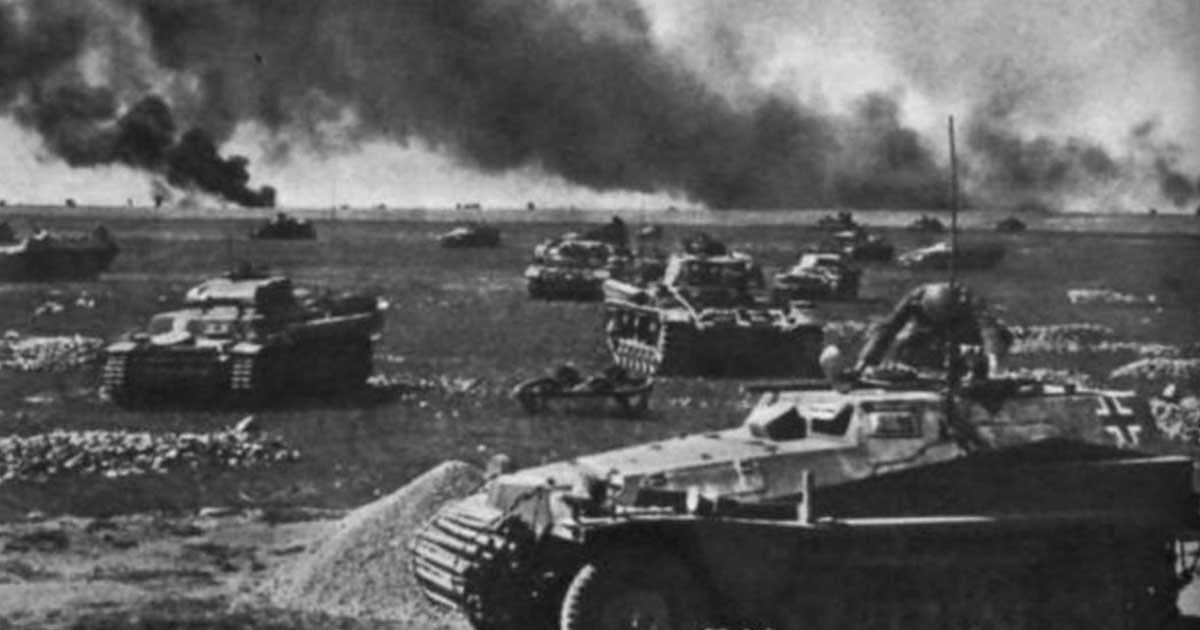IDR Blog
Battle of Rajauri 1948
Background to the Battle
While the decisive battle for Srinagar was being fought in the Valley, the situation in the Jammu region was fast deteriorating. The Pakistani aggression in this area started on October 15’, 1947. The Raiders were mostly local Muslims from across the border reinforced by Muslim deserters of the State Forces and supported and led by Pakistani Regulars. They were well backed from across the borders by Pakistan Army with supplies, arms, ammunition and fire support. The State Forces in the area were stationed at the towns of Mirpur, Kotli, Poonch, Jhangar, Naushera, Bhimbergali, Rajauri and Beri Pattan. The Raiders succeeded in capturing large areas close to the border and besieging the towns with overwhelming forces. Thousands of refugees had taken shelter in these towns. Poonch alone had 40,000 refugees. Major General Kalwant Singh, Commander Jammu and Kashmir Force had moved his headquarters to Jammu. With the battle in the Valley under control, he now concentrated on relieving these towns and saving the refugees. His plan visualised employment of two columns as follows:–
-
- One column under 161 Infantry Brigade would move south from Uri through the Hajipir Pass and relieve Poonch.
- The other column consisting of 50 Para Brigade would move to Kotli and then move to Mirpur by way of Akhnur, Beri Pattan, Naushera and Jhangar. Nov 20 was the date fixed for relief of Mirpur. 50 Para Brigade was to clear all enemy en route.
The Uri – Poonch road was in a very bad condition. The 161 Infantry Brigade column started on November 20 and could proceed very slowly due to terrain conditions and enemy interference. On November 21, the Raiders ambushed its rear guard. Twenty-four lorries carrying the column’s rations, ammunition and equipment were looted and the lorries were burnt. Of the two platoons (about 60 men) forming the rear guard, 16 were killed and 14 were wounded. The column suffered further misfortune. The Poonch garrison, being out of radio communication, was not aware of the move of the column and on seeing it approach, took it for an enemy column and blew up a bridge on Betar Nala, 16 kms north of the town. The link up was now impossible. 1 KUMAON was ordered to move to Poonch on foot with a few jeeps and reinforce the garrison. Lt Col Pritam Singh, Commanding Officer 1 KUMAON, was made commander of the garrison. He successfully defended Poonch for full one year till it was finally relieved in November 1948.
The 50 Para Brigade Column started from Jammu on November 16. On reaching Beri Pattan it found its path blocked. The enemy had burnt the ferry. It took 24 hours to build a temporary causeway. No 32 Outstanding Victories serious opposition was encountered up to Jhangar. But progress was slow due to numerous roadblocks of felled trees, boulders, mines and demolished causeways. Jhangar was relieved on November 20. At Jhangar two companies of 3/ 1 PUNJAB joined the brigade. These were one Sikh and one Rajput company of the battalion, which had been allotted to Pakistan and had managed to escape. The road from Jhangar to Kotli passed through mountains. After two days of action, the brigade reached Kotli on November 22. But the victory was short lived. By then Mirpur had fallen. The Mirpur garrison was able to fight their way out. With the fall of Mirpur, it was decided that Kotli could not be held. The town and its 15,000 refugees were evacuated. The troops returned to Jhangar. Leaving a battalion to hold Jhangai, the rest of the brigade returned to Naushera. The enemy attacked Jhangar on December 23-24. A force of about 6000 attacked Jhangar while another force of 3000 Raiders cut off the route from Naushera to Jhangar. As reinforcements failed to reach Jhangar, it fell. The front-line at the end of December 1947 in Jammu Sector is as shown in Map.
Lt Gen KM Cariappa took over command of Western Command on January 20, 1947. 50 Para Brigade was located’ at Naushera. The orbat of 50 Para Brigade were as under:–
-
- 3 (PARA) MARATHA LIGHT INFANTRY
- 1 RAJPUT
- 3 (PARA) RAJPUT
- 2/2 PUNJAB
- 1 PATIALA
- One squadron of armoured cars of 7 Light Cavalry
- One field battery (6 guns)
- One mountain battery (6 howitzers)
During his visit to Naushera at the end of January, General Cariappa directed Brigadier Osman, Commander 50 Para Brigade, to capture Kot, which lay about 8 kms west of Naushera. It was an important feature and dominated the Kot – Tawi valley. The enemy had a strong force of about 500, mainly deserters of State Forces supported by 3-inch mortars and medium machine guns. The position was attacked by two battalions and captured. The enemy suffered about 150 killed and 200 wounded. The success at Kot after the Jhangar debacle raised the morale of the Indian Army. The enemy reacted by mounting a major attack on Naushera on February 6. 11,000 to 15,000 troops were used in this determined attack. The enemy achieved complete surprise. They overran Indian positions south west of Naushera. Tain Dhar, a dominating hill feature held by a company of Rajputs came under determined attack and almost every jawan was killed. Fortunately, reinforcements in the form of another company of Rajputs reached the feature in time and the enemy was beaten back. Lt Kishen Singh Rathore, who led the reinforcing company, was awarded the Maha Vir Chakra. Nk Jadunath Singh of the company was posthumously awarded the Param Vir Chakra. Artillery and Air Force also attacked the enemy. The battle raged the whole day. The Indian forces beat back waves of attacks and held firm. Unable to capture Naushera, the enemy retreated having suffered over 2000 killed. The successful defence of Naushera turned the tide of battle. The enemy was demoralised.
The Indian Army now launched Operation Vijay for capture of Jhangar. 19 Infantry Brigade under Brigadier Yadunath Singh joined 50 Para Brigade at Naushera. This Brigade consisted of the following troops:-
-
- 2 RAJPUTANA RIFLES
- 4 DOGRA
- 1 KUMAON
- 37 Assault Field Company
To direct the operations. General Kalwant Singh moved his tactical headquarters to Naushera and General Cariappa moved to Jammu. The plan was that 50 Para Brigade would move on the west of the road Naushera – Jhangar and 19 Infantry Brigade would move east of the road. While the two brigades advanced along the hills on two sides of the road. 7 Light Cavalry less one squadron, a squadron from Central India Horse and a company of Rajputs moved along the road. The artillery support consisted of two mountain batteries, one battery and a troop of field guns and a troop of anti tank battery. One platoon of machine gunners was also given to each brigade. The recapture of Jhangar was of special significance to Brigadier Osman as he had been unable to defend it. In a special order of the day he made a stirring appeal to his troops to retrieve their honour. The advance commenced on March 14. The enemy had laid anti tank mines on the road and one armoured car was blown up. 37 Assault Field Company speedily cleared the mines from the road, cleared roadblocks and repaired culverts. Lt JP Chopra of the field company who led the armoured column in the first Battle of Rajauri 1948 35 armoured car cleared a number of mines under enemy fire was awarded the Vir Chakra. After a number of determined assaults on the various features en route and around Jhangar, the town was finally captured on March 18. 50 Para Brigade was left to hold on to Jhangar and 19 Infantry Brigade returned to Naushera. The enemy kept shelling Jhangar. On the night of April 3, Brigadier Osman, Commander 50 Para Brigade was killed during shelling.
General Cariappa now turned to the recapture of Rajauri. Non Muslims escaping from there had brought tales of inhuman atrocities. The town of Rajauri lay 48 kms north of Naushera. A fair weather road linking the two towns followed along the valley of the Tawi River and passed through thickly wooded hills. Many of the hills were well defended. Half way to Rajauri was Chingas, an important enemy base used for launching attacks on Naushera.
Plan for the Battle
General Kalwant Singh’s plan for capture of Rajauri was as under: (Map)
-
- 19 Infantry Brigade was to advance from Naushera to Rajauri. The brigade was to commence advance on April 8.
- 50 Para Brigade and 80 Infantry Brigade were to carry out diversionary attacks to confuse the enemy about the actual intentions of the Indian Army.
Relative Strength
The enemy was holding a number of positions on the 48-km route of advance. The major positions en route were as under:–
- Barwali Ridge. This ridge, about 11 kms north of Naushera was held by Pakistani Regulars and was supported by 3-inch mortars and medium machine guns.
- Chingas. This was an important enemy base about half way between Naushera and Rajauri and was expected to be held in strength. The defences were based on hills surrounding the village.
- Rajauri. This was an important town. But being well away from the front-line was not held in strength.
The road from Naushera to Rajauri was a single lane road in a bad state of repair. To delay the Indian Forces the enemy had created a large number of landslides, blown up culverts and minor bridges and established a number of roadblocks using felled trees, mines and booby traps.
For the capture of Rajauri, 19 Infantry Brigade had the following troops under command:–
-
- Central India Horse less one squadron
- 4 DOGRA
- 2 JAT
- 2 RAJPUTANA RIFLES
- One field and one mountain battery
- 37 Assault Field Company, Engineers
The Battle
Advance commenced at dawn on April 8. As the advancing troops reached the area of Nadpore Fort, the enemy opened heavy fire from 3-inch mortars. A mortar bomb landed in the engineer section of the vanguard killing two jawans and wounding two 38 Outstanding Victories including 2/Lt Rane. The officer’s injury was not very serious and he refused to be evacuated. The advance was held up by mines and a roadblock of five big pine trees and covered by machine gun fire. Though ‘wounded, Lt Rane started clearing the mines and the roadblock without waiting for reinforcements. The Barwali Ridge was soon contacted and a firm base was established for the attack. The attack was put in by 4 DOGRA supported by artillery and tank fire. The enemy put up determined resistance. But the DOGRAs succeeded in capturing the ridge by 1600 hours. The engineers immediately began to clear a landslide at the foot of the ridge. The enemy put in a determined counter attack and recaptured a portion of the ridge. The engineers had to withdraw due to the volume of enemy fire. The enemy was again evicted by a night attack and advance was recommenced next morning.
Another roadblock was soon encountered. The engineer platoon under Lt Rane started clearing the landslide at dawn. To get protection from the enemy fire from adjoining hills, Lt Rane took a tank close to the block and crouching under the tank, removed the mines and blasted the’ roadblock. Thus he succeeded in removing the roadblock by 1000 hours on April 9. The advance was now conducted on a broad front with the infantry moving through the hills on both sides of the road and the tanks moving along the main axis. The progress was slow. There was one roadblock almost every kilometre. Each roadblock was covered by enemy fire. But Rane and his men of the engineer platoon kept clearing the roadblocks with total disregard for their personal safety. The tanks were thus able to reach Chingas by 1400 hours on April 10. The enemy put up only light resistance and the hills around Chingas were captured by the infantry. Now the road had to be made fit for movement of the guns and other stores before the advance could be resumed. 37 Assault Field Company completed this task by 1100 hours on April 11.
The Brigade Commander held a conference at Chingas to chalk out the future course of action. There were alarming reports of massacre from Rajauri. The obstacles on the road ahead were reported to be even more formidable. The Commander was also afraid that the enemy would reinforce the Rajauri garrison and make its capture difficult. Speed of advance was thus of utmost importance. A bold plan was adopted. The tanks with one company of infantry and Rane’s platoon of engineers would leave the road and proceed to Rajauri along the bed of the Tawi River as fast as possible. The risk of some tanks getting stuck in the watery riverbed was accepted. The advance recommenced on April 11 itself. By evening of April II, the tank column reached Kallar. The advance was resumed on the morning of April 12 and the tanks entered Rajauri by 1830 hours the same day. Rajauri was a ghost town when the troops entered. There was no opposition. The enemy had fled in panic. But before doing so they had destroyed most of the town and slaughtered every man, woman and child they could find. The barbarism of the Pakistani Raiders in Kashmir in 1947-48 was unmatched in the history of the twentieth Century and perhaps in the history of civilisation.
Meanwhile 37 Assault Field Company less Rane’s platoon worked day and night to make the road fit for traffic. The initial estimates were that it would 40 Outstanding Victories take up to April 25. The Brigade Commander put the troops on half rations. But the first 1 ton vehicle reached Rajauri on April 17 and by April 21, the first convoy reached Rajauri. Some of the locals including women; and children, who had fled to the hills, returned to the town. Rajauri was a remarkable victory. 2/Lt Rane was awarded the Param Vir Chakra for his gallantry of clearing the roadblocks continuously for three days under enemy fire despite being wounded. The Bombay Sappers were awarded the Battle Honour ‘Rajauri’ for the magnificent performance of 37 Assault Field Company in the battle.
Analysis
The capture of Rajauri was a magnificent achievement. The advance of 48 kms through thickly wooded hills along a poorly maintained road denied at almost every kilometre by landslides, road blocks and mines along with clearing the Barwali Ridge in just five days was a remarkable feat which any army would be proud of How was it possible?
First was the ability of the Indian troops to achieve surprise. The enemy was expecting an Indian advance. Hence Barwali Ridge was strongly defended and the road Naushera – Rajauri had been effectively denied. But the enemy had not appreciated the speed with which 19 Infantry Brigade would advance. The enemy had also not considered the move of tanks along the bed of the Tawi River possible. By doing the unexpected and seemingly impossible, Commander 19 Infantry Brigade completely upset the battle plan of the enemy. The enemy got no time to move reinforcements and defend Rajauri or Chingas. The speed of advance was largely possible due to the ability of the army engineers under the gallant leadership of 2/Lt Rane to clear the obstacles and mines under enemy fire in much less time than assessed by the enemy.
Secondly, in moving the tanks along the riverbed, the Indian army was able to overcome the limitations of terrain and achieve surprise. As a result they did not meet any enemy opposition on the way. They were thus able to advance almost 20 kms in 24 hours and recapture Rajauri without a fight. It often pays to adopt terrain-wise difficult routes for attack rather than attack along expected directions well defended by the enemy.
Third and a major factor was the use of tanks in terrain considered less than suitable. Armour is characterised by mobility, fire power, protection and shock action. Armour commanders are reluctant to employ tanks in terrain where mobility and maneuverability is restricted. But fire power, protection and shock action can be exploited in the hills and mountains. Direct fire from the tank guns are most effective in destroying enemy strong points in hills and mountains. Their machine guns add to the fire power during assault. The protection provided by the armour demoralises the enemy and all except the most determined, well-trained infantry tend to bolt at the sight of approaching tanks. No doubt, cross-country increases the vulnerability of tanks to hand held anti tank weapons. But that should not deter commanders from using armour in hills and mountains. It is surprising that in spite of light tanks playing battle winning roles in the 1947-48 war in Kashmir at Rajauri, Shalateng, Zoji La and even at Chusul, the Indian Army did away with light tanks and stopped using them in the mountains. Infantry combat vehicles could fill in this role and the Indian Army may like to review their tactical doctrine for employment of armour in the mountains.
The fourth reason for success was the ability of the Engineers to clear the numerous roadblocks created by the enemy much faster than the enemy expected. To some extent it was due to the outstanding courage and devotion to duty displayed by Lt RR Rane. He was wounded by a splinter from a mortar bomb at the start of the advance but refused to be evacuated. For 72 hours, he cleared one roadblock after another under enemy fire and completely upset the enemy’s plan of battle. However, the efforts of the 37 Assault Field Company to clear the road from Chingas to Rajauri in less than half the time assessed played an important role in the success.
Book Excerpt: Outstanding Victories of the Indian Army, 1947-1971







